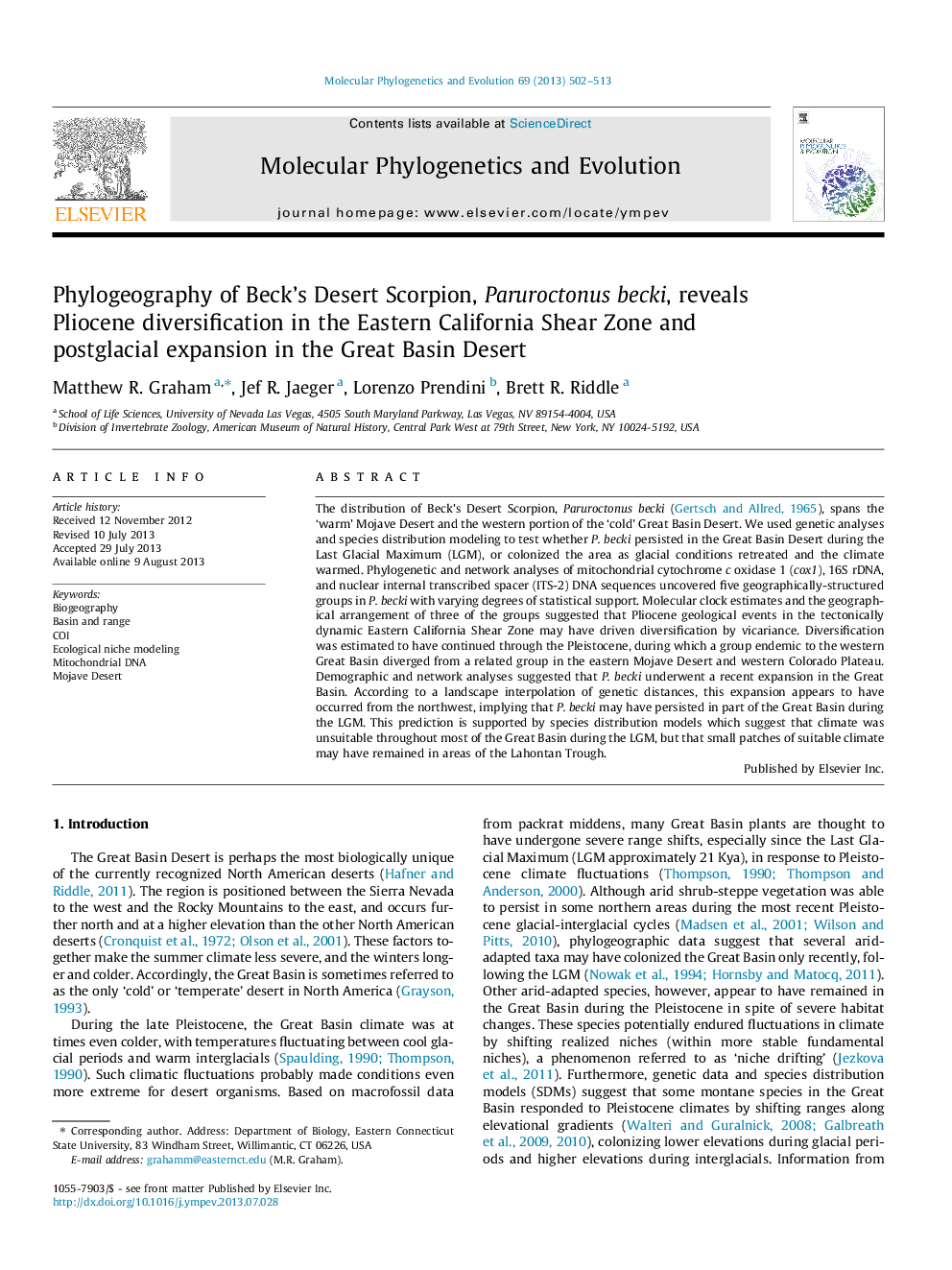| کد مقاله | کد نشریه | سال انتشار | مقاله انگلیسی | نسخه تمام متن |
|---|---|---|---|---|
| 5919633 | 1164270 | 2013 | 12 صفحه PDF | دانلود رایگان |
- P. becki contains five geographically-structured mitochondrial lineages.
- Intraspecific diversification coincides with tectonic events in the Eastern California Shear Zone.
- P. becki expanded its range in the Great Basin following the Last Glacial Maximum.
The distribution of Beck's Desert Scorpion, Paruroctonus becki (Gertsch and Allred, 1965), spans the 'warm' Mojave Desert and the western portion of the 'cold' Great Basin Desert. We used genetic analyses and species distribution modeling to test whether P. becki persisted in the Great Basin Desert during the Last Glacial Maximum (LGM), or colonized the area as glacial conditions retreated and the climate warmed. Phylogenetic and network analyses of mitochondrial cytochrome c oxidase 1 (cox1), 16S rDNA, and nuclear internal transcribed spacer (ITS-2) DNA sequences uncovered five geographically-structured groups in P. becki with varying degrees of statistical support. Molecular clock estimates and the geographical arrangement of three of the groups suggested that Pliocene geological events in the tectonically dynamic Eastern California Shear Zone may have driven diversification by vicariance. Diversification was estimated to have continued through the Pleistocene, during which a group endemic to the western Great Basin diverged from a related group in the eastern Mojave Desert and western Colorado Plateau. Demographic and network analyses suggested that P. becki underwent a recent expansion in the Great Basin. According to a landscape interpolation of genetic distances, this expansion appears to have occurred from the northwest, implying that P. becki may have persisted in part of the Great Basin during the LGM. This prediction is supported by species distribution models which suggest that climate was unsuitable throughout most of the Great Basin during the LGM, but that small patches of suitable climate may have remained in areas of the Lahontan Trough.
Journal: Molecular Phylogenetics and Evolution - Volume 69, Issue 3, December 2013, Pages 502-513
